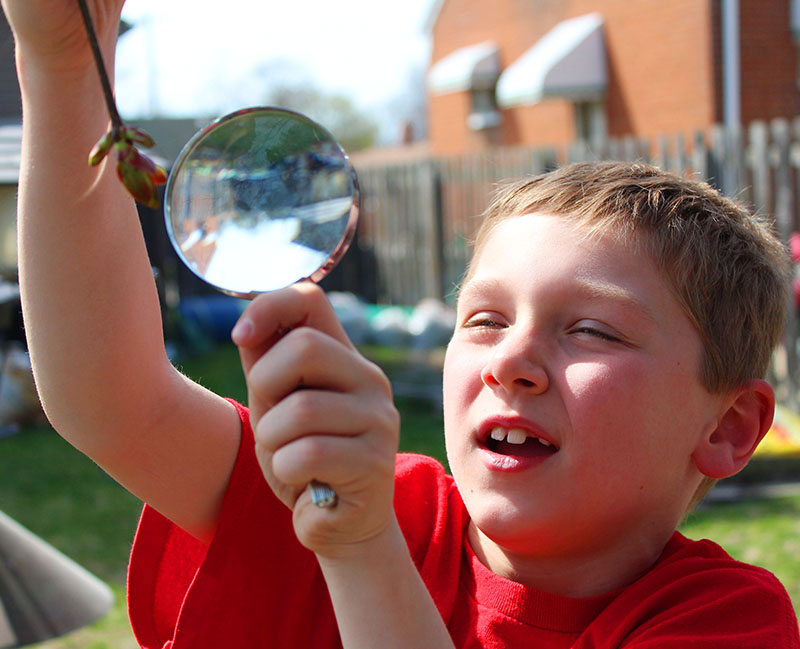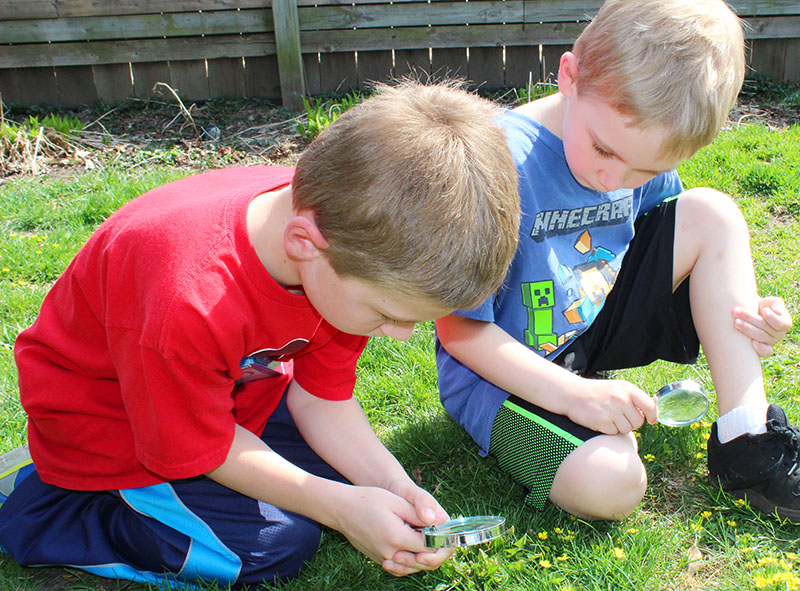Summary
Getting children to focus on their studies can be a challenge during the warming days of Spring. These are some of the ways our family embraces the season.Trying to get our four children to pay attention to their studies can be a daunting task, especially after a long Easter break.
The warming temperatures and the children’s desire to be outside playing can make getting back to book work seem like torture to our young adventurers.
It may be hard to convince them that getting back to studies is what is needed, but having fun springtime activities at the ready can entice them into completing assignments.
Here are some of my ideas for how to celebrate spring in your homeschool.
1. Plenty of Springtime Books
My first task each season is to make sure I have relevant books for the children to read placed around our home in comfy reading spots.

Taking out last season’s books and replacing them with fondly-remembered favorites, while sprinkling in some new ones, gets the children excited about the season ahead.
A trip to the library or book store can make even reluctant readers excited about getting a new book to read about a topic they are interested in.
You can help them find spring related books that can lead to spring related activities that keep things fresh.
Involving your child in the choosing process can give them a sense of pride and excitement when their interests are encouraged and respected. Reading a good book is also a fantastic way to spend a rainy day.
2. Outdoor Exploring
Observing nature is one of my favorite things to do in any season, but spring can be an especially rewarding time.

Discussing subjects like migration, which birds stayed for the season, which birds are just now returning, is fascinating and easy to do, especially if you have a bird feeder that attracts birds year round.
Our children love using binoculars to spot birds in tree branches or hopping around the feeder.
Using bird guide books is a fun and easy way to learn about the birds that frequent your area and can also be incorporated into an art lesson.
Have them draw a bird they have observed while out in the yard or on a walk. Using the guide can help them notice small details about each bird they saw.
Observing the changes happening to the trees and shrubs around you is also a great way to get everyone outside to discover what trees you have on your property or in your neighborhood.
You can have the children look at the closed buds using a magnifying glass, and then as the days get warmer they can observe the buds cracking open and the leaves or flowers emerging.
3. The Majesty of Thunderstorms
Storms can be pretty frightening for some children, and even adults. My son, Simon, was very nervous when the big thunderstorms started this season.
I made sure to listen to his fears and not diminish how he was feeling. When a storm would arrive, we would bring up our local news station’s Doppler radar to track the storm.
We discussed what the different colors on the map meant and when the meteorologist thought it would be over, and I soothed his fears, reassuring him that it was not a severe storm.
This seemed to really help him. Before doing this with him, he thought every storm would produce a tornado, flood, or some other equally awful thing.
Now that he is sure not every storm is a catastrophe waiting to happen, he is actually enjoying them more. It has also led to discussions about what to do if a severe storm does occur.
Understanding some safety precautions helped him to feel safe, and gave him a sense of control.
4. Gardening
Gardening is a wonderful way to enjoy spring with children. I try to get them involved in the process as much as possible, from choosing what we plant, having them put seeds or seedlings into the earth, watering, weeding, and harvesting.
Our family enjoys planting vegetables in our garden. We all get excited when the plants that we have tended are ready to be harvested and their bounty eaten. Miraculously, our children want to eat every fresh vegetable that comes from the garden they put so much time into.
Even very young children can benefit from gardening alongside their parents. I don’t have a very green thumb, but even I was able to get some tomatoes, carrots, dill, and zucchini to grow.
Even if you only want to put a few plants into pots, the excitement your child will feel picking veggies off of plants they have helped tend will be worth the effort.
Plus, you get to learn about worms, insects, squirrels, different soils, weather, and many other subjects.
Gardening is a treasure trove of learning and fun. If you’ve never tried it, may I suggest digging into it this spring? If it seems overwhelming, start easy, trying one kind of plant.
If you have gardening experience, I would love to hear your green thumb wisdom. Which plants are your favorites, which plants could a beginner have the most success with, or which plants give abundant crops for larger families?
5. Plenty of Time for Play
In my experience, children are able to focus on their studies more effectively when they are allowed ample time to run and play outside.
I find myself extending outdoor recess times if the children are really enjoying themselves with fruitful play, exploring their environment, or making their own discoveries.

I believe these things are vital to learning and help children focus when it’s time to sit and get back to their studies. Having this freedom to let our children run and explore is such an incredible blessing that homeschooling provides.
I think we should embrace the enthusiasm of spring, let those schedules loosen a bit, and see how beautiful Creation is.
I would love to hear how your family experiences spring, what activities your family enjoys, and what helps your children continue to focus on their lessons while the weather is so tempting.

 Seton Magazine Catholic Homeschool Articles, Advice & Resources
Seton Magazine Catholic Homeschool Articles, Advice & Resources

